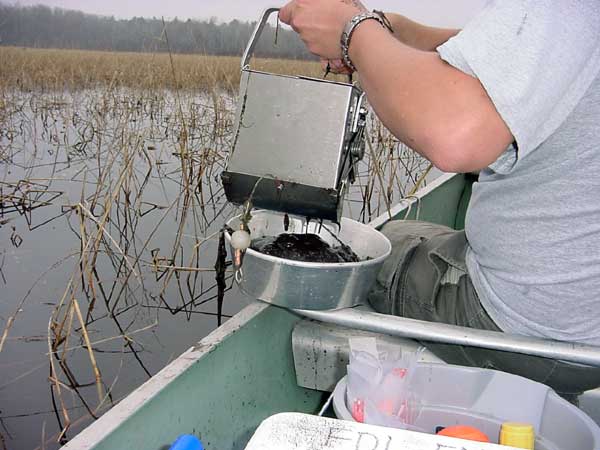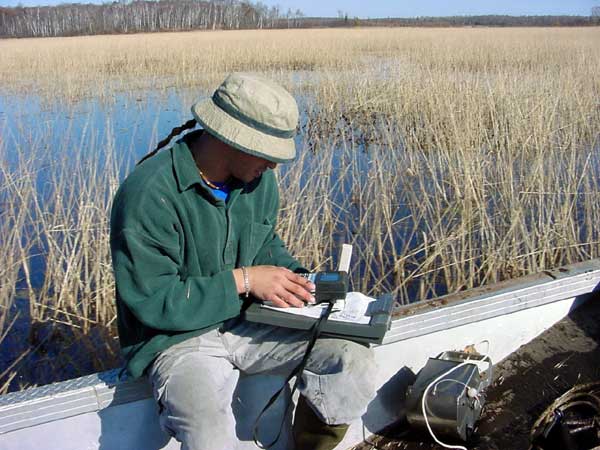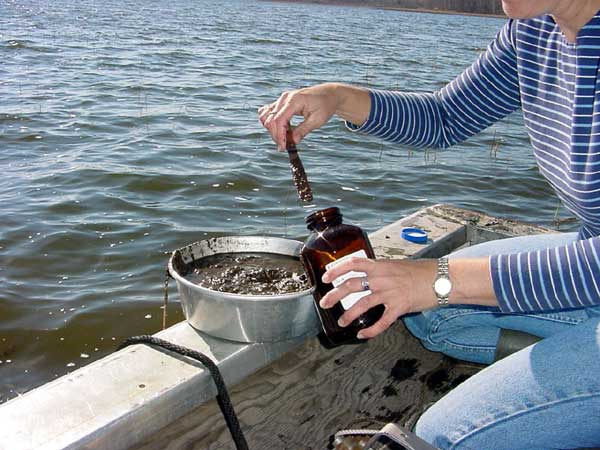Sediment Studies
Contaminants such as mercury, other heavy metals, and PCBs (polychlorinated biphenyls) tend to accumulate in the sediments of lakes and streams, and can be introduced to the aquatic food chain by burrowing insects, plant uptake, and fish/wildlife foraging behavior. In 1999, we were awarded a grant from EPA’s Great Lakes National Program Office (GLNPO; http://www.epa.gov/grtlakes/) to do a sediment quality assessment of twelve reservation lakes. In this project, we looked at general lake sediment characteristics (particle size, total organic carbon, percent solids), contaminants (mercury, PCBs and lead), and performed toxicity tests on half of the study lakes to see if sediment-dwelling organisms (Chironomus tentans and Hyalella azteca) were less able to survive and grow in our lake sediments.
Testing Sediments



The results of this study indicated that PCBs are not a contaminant of concern in Fond du Lac waters, but many of the mercury and lead concentrations in the sediment samples were above a threshold level of concern for human and aquatic life. In 2001 we received a second grant from GLNPO, in order to specifically measure methylmercury in our previous samples, plus add twelve new sampling sites from the St. Louis River. We then looked for relationships between sediment contaminant levels and our water quality and fish contaminant data. This type of information can also be useful for other water quality protection and restoration efforts in the St. Louis River watershed, as an example of “baseline” conditions for the river upstream of the major point sources of contamination.








